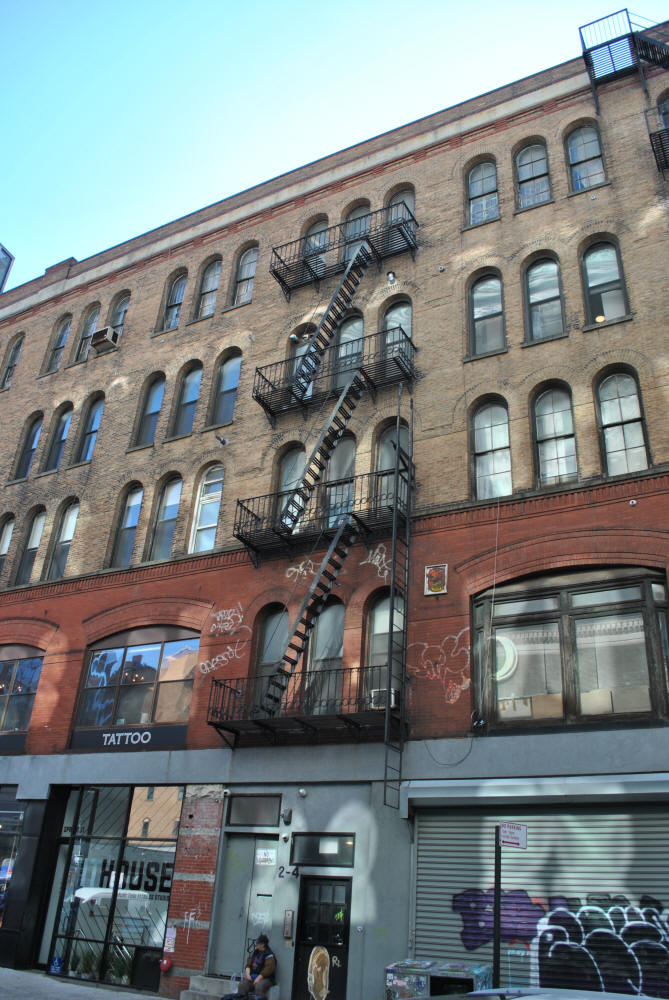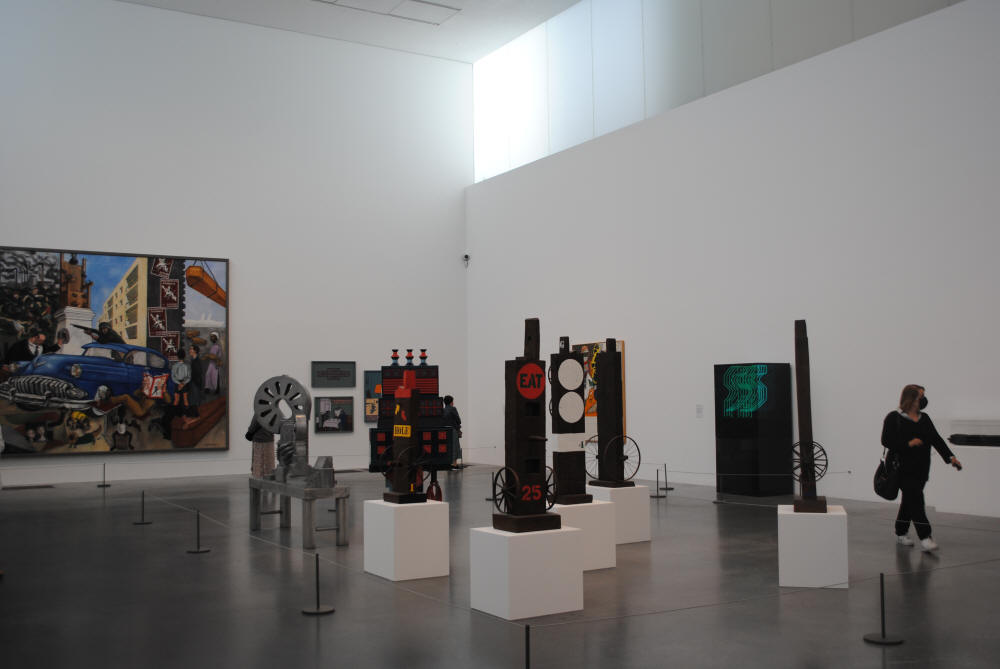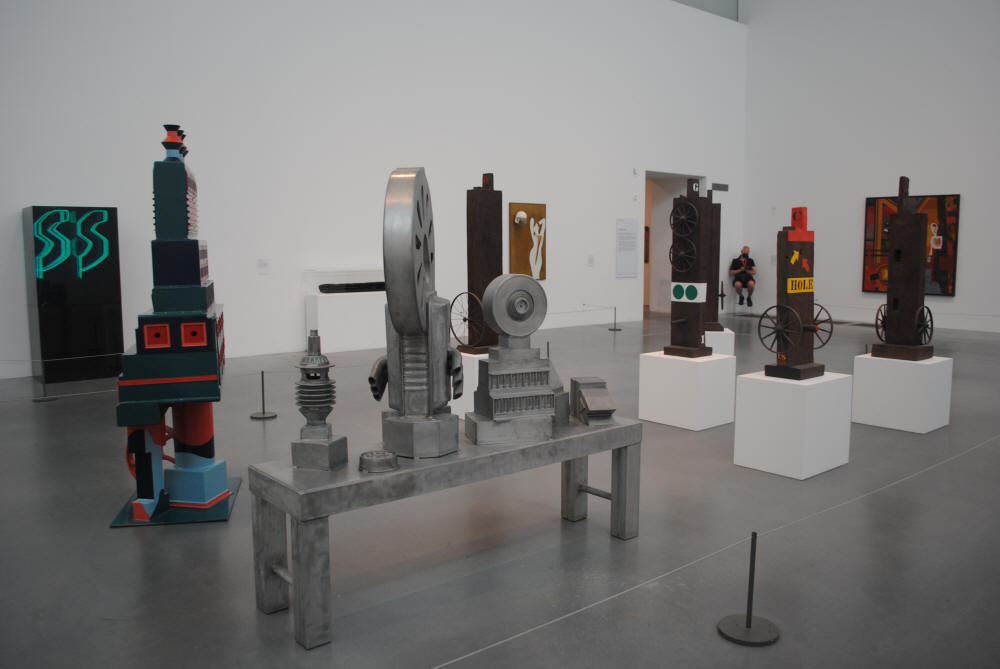Partner Ellsworth
Kelly
Queer Places:
2 Spring St, New York, NY 10012
 Robert Indiana (September 13, 1928 - May 19, 2018), best known as the creator of the LOVE series of paintings and
sculptures, was an openly gay American artist who has incorporated autobiographical
and gay themes within his work. The work of Broadway's gay and lesbian artistic community went on
display in 2007 when the Leslie/Lohman Gay Art Foundation Gallery presents
"StageStruck: The Magic of Theatre Design." The exhibit was conceived to
highlight the achievements of gay and lesbian designers who work in
conjunction with fellow gay and lesbian playwrights, directors,
choreographers and composers. Original sketches, props, set pieces and
models — some from private collections — represent the work of over 60
designers, including Robert Indiana.
Robert Indiana (September 13, 1928 - May 19, 2018), best known as the creator of the LOVE series of paintings and
sculptures, was an openly gay American artist who has incorporated autobiographical
and gay themes within his work. The work of Broadway's gay and lesbian artistic community went on
display in 2007 when the Leslie/Lohman Gay Art Foundation Gallery presents
"StageStruck: The Magic of Theatre Design." The exhibit was conceived to
highlight the achievements of gay and lesbian designers who work in
conjunction with fellow gay and lesbian playwrights, directors,
choreographers and composers. Original sketches, props, set pieces and
models — some from private collections — represent the work of over 60
designers, including Robert Indiana.
Indiana was born on September 13, 1928. Oil company manager Earl Clark and homemaker Carmen Watters
of New Castle, Indiana adopted the infant as their only child.
Clark attended local schools before studying Russian at Syracuse University. He served in the U.S. Army Air
Corps from 1946 to 1949 and then entered the Art Institute of Chicago with the assistance of the GI Bill.
Upon graduating with a B.F.A. in 1953, Clark won a scholarship to the University of Edinburgh. He earned an
M.F.A. there in 1954 and moved to New York City.
Clark rented a loft in an old warehouse on Coenties Slip, a since-demolished industrial area at the
southernmost tip of Manhattan that became an artistic center because of its cheap rents. There he became
part of a group of young artists including Agnes Martin, Lenore Tawney, Jack Youngerman, and Ellsworth
Kelly. For a time, he and Kelly were lovers.
Clark changed his surname to Indiana in 1958 to reflect better the American focus of his work. He first
attracted notice in 1959 with unpainted assemblages, stenciled with short words and constructed from
scavenged wood, pieces of iron, and wheels.
Indiana is part of the pop art movement, though he deprecatingly refers to himself as a "sign painter." Like
other pop artists he invests commonplace objects and familiar images with new meaning. However, his
works occasionally deviate from the pop art norm by evincing intense personal and political engagement.
They express concern over social issues and make pointed political statements. His painting Yield Brother
(1962), for example, focuses on the peace movement while his Confederacy series (1965-66), created
during the Civil Rights movement, attacks racism in four southern states.
In addition, Indiana tends to be more autobiographical than other pop artists. For example, his EAT/DIE
(1962) diptych focuses on the last word, "eat," spoken to him by his mother on her deathbed. The painting
also evokes the diner his mother managed, which had the familiar "EAT" sign looming overhead. Indiana also
collaborated with gay pop artist Andy Warhol on the 1962 short film Eat.
Indiana acknowledges a kinship with earlier precisionist painters, including especially gay artists
Charles
Demuth and Marsden Hartley. He pays homage to Demuth in The Demuth American Dream No.5 (1963),
which was clearly inspired by Demuth's I Saw the Figure 5 in Gold (1928). In 18 canvases collectively
referred to as Hartley's Elegies and completed in the 1990s, Indiana pays tribute to Hartley.
Indiana has also been influenced by the great American queer writers
Walt Whitman,
Herman Melville, and
Hart Crane. His Melville Tryptich (1961) is considered one of his classic images, and several paintings have
been inspired by Crane's poem of longing and gay affiliation, "The Bridge."
In 1964, Indiana received a commission from the Museum of Modern Art for a Christmas card design. He
created a picture that emphasized the words Love is God (1964). Typical of pop artists, Indiana serialized
the image. In 1966, he exhibited a series of "love" paintings, including a definitive version featuring four
red block letters completely filling the canvas against a blue and green background. Each letter fills a
quarter of the picture, the L and a tilted O in the top quadrants, the V and E in the bottom quadrants.
The LOVE image had an immediate impact, especially among the youth culture of the 1960s. As a painting,
graphic design, and a sculpture, it has become one of the most pervasive and widely disseminated images
of all time.
In 1973, the U.S. Postal Service commissioned Indiana to do a LOVE postage stamp. The resulting product
became the most popular stamp ever issued by the U.S. government.
In 1978, Indiana moved to Vinalhaven, Maine. Working with Vinalhaven Press, he has used the traditional
printmaking media of etching and lithography to depict the solitude and isolation of his life in rural Maine.
Indiana's more recent works include biographical elements of gay lives, including his own.

2 Spring St

Tate Modern


The Tate Modern, London

The Rockfeller Center, New York
My published books:

BACK TO HOME PAGE

- Hidden Histories, 20th Century Male Same Sex Lovers in the Visual
Arts, by Michael Petry
-
https://www.playbill.com/article/stagestruck-exhibit-featuring-gay-and-lesbian-broadway-design-talent-begins-nov-14-com-145399
- Indiana, Robert (b. 1928)
by Caryn E. Neumann
Encyclopedia Copyright © 2015, glbtq, Inc.
Entry Copyright © 2005, glbtq, inc.
Reprinted from http://www.glbtq.com
 Robert Indiana (September 13, 1928 - May 19, 2018), best known as the creator of the LOVE series of paintings and
sculptures, was an openly gay American artist who has incorporated autobiographical
and gay themes within his work. The work of Broadway's gay and lesbian artistic community went on
display in 2007 when the Leslie/Lohman Gay Art Foundation Gallery presents
"StageStruck: The Magic of Theatre Design." The exhibit was conceived to
highlight the achievements of gay and lesbian designers who work in
conjunction with fellow gay and lesbian playwrights, directors,
choreographers and composers. Original sketches, props, set pieces and
models — some from private collections — represent the work of over 60
designers, including Robert Indiana.
Robert Indiana (September 13, 1928 - May 19, 2018), best known as the creator of the LOVE series of paintings and
sculptures, was an openly gay American artist who has incorporated autobiographical
and gay themes within his work. The work of Broadway's gay and lesbian artistic community went on
display in 2007 when the Leslie/Lohman Gay Art Foundation Gallery presents
"StageStruck: The Magic of Theatre Design." The exhibit was conceived to
highlight the achievements of gay and lesbian designers who work in
conjunction with fellow gay and lesbian playwrights, directors,
choreographers and composers. Original sketches, props, set pieces and
models — some from private collections — represent the work of over 60
designers, including Robert Indiana. 





